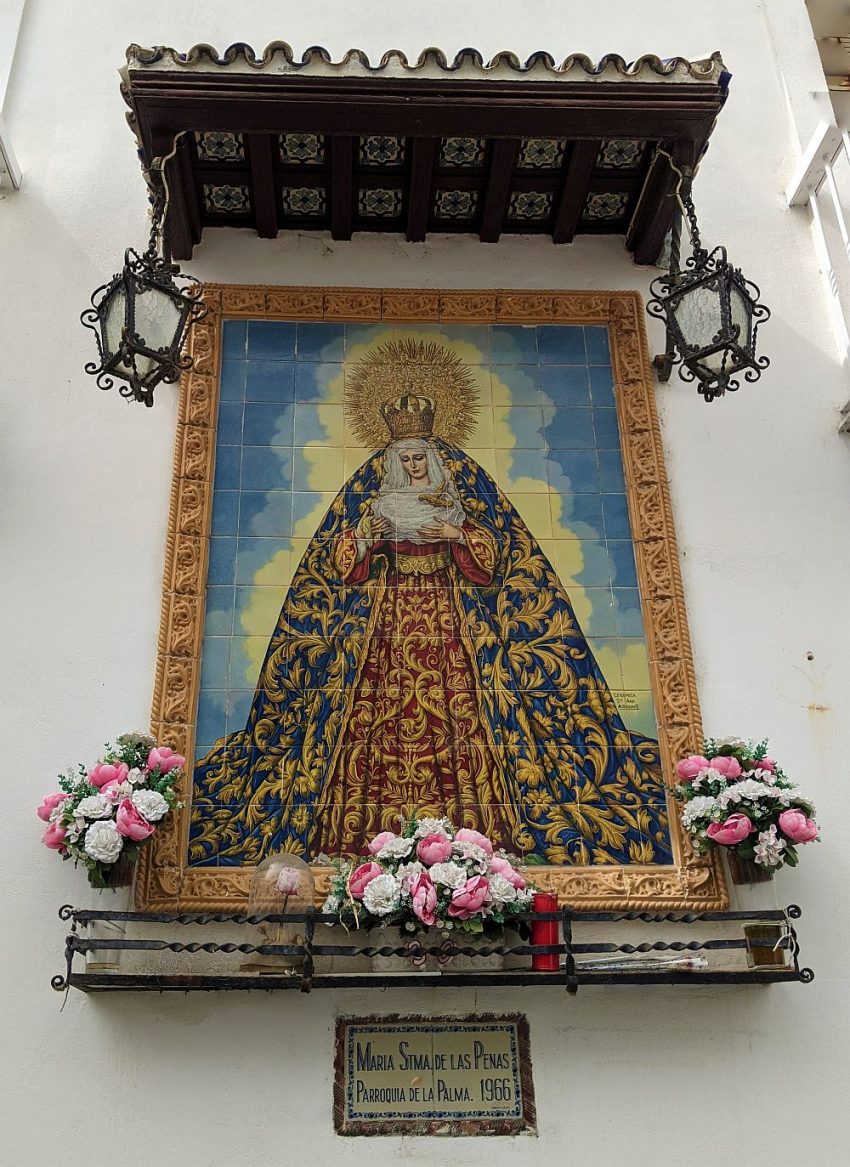We have just spent two wonderful weeks in Andalucía in southern Spain, largely because of my ambition to visit the most beautiful and iconic Islamic architecture in the world. (The delicious food and wine was just a bonus.) Iran has fabulous treasures and even though visiting the country is looking a little uncertain at the moment, I am optimistic that I’ll get there one day. There is an amazing tower called the Minaret of Jam, which dates back to the 12th century, but it’s in Afghanistan and even I don’t hold out much hope of ever seeing that.

Despite my love of all religious buildings, I’d say I was completely non-religious. I can’t even lay claim to being spiritual, largely because I’m not entirely sure what that means, but also because I suspect that even if I did know, I wouldn’t fit the description. What’s the opposite of spiritual? Prosaic? Anyway, visiting staunchly Catholic Spain in the weeks before Easter is quite a revelation for those not raised in such an overtly religious environment. Reminders are everywhere, with pictures of Christ in his crown of thorns displayed in many shops and restaurants.
If you’re in southern Spain in the week before Easter, known as Santa Semana (Holy Week), you’ll see parades and processions of people walking through the streets, carrying wooden floats with religious icons. Although Easter was still a few weeks away, rehearsals for Holy Week were well under way when we were there, with marching bands, long lines of official-looking people walking in formation, and sweating men (and a few women) straining to carry the heavy wooden floats bearing large effigies of the Virgin Mary or Christ. I did try to participate on a modest scale by bravely trying an Easter pastry that turned out to be a soggy cinnamon disappointment, which I couldn’t bring myself to finish. Perhaps it’s the sort of thing you can only appreciate if you’ve eaten it since childhood, like Branston Pickle or Vegemite.


Little religious figurines were available to buy, including those unnerving looking penitents in the white pointed hats who look like KKK figures to the uninitiated. We were quite shocked years ago when we first clapped eyes on people walking through the streets of Nerja in those white hats during Holy Week, but now we know that those outfits are designed for the purpose of anonymity and date back hundreds of years to the Spanish Inquisition. Still, a little unnerving to the outsider.
In Britain we’re not quite so obviously religious. I haven’t seen one shop with a religious picture propped up in its window and I can’t say that I’m sorry. These are disturbing times and Christ with his crown of thorns doesn’t lighten the mood. No-one here seems to be practising for upcoming processions of religious figures through the streets and there are no marching bands in evidence either, although I rather miss their jaunty music and glinting uniforms.
Of course church-goers here also anticipate Easter as the most important event in the Christian calendar, but it’s just not as obvious as it is in Spain, not as central to everyone’s life. Nevertheless, we’re in no doubt that Easter’s coming: the shops are full of chocolate eggs, extravagant bunches of spring flowers and delicious hot cross buns. Only mildly religious and wonderfully prosaic.


Ah, I’d forgotten you were going to Spain. I had wondered why your blog was silent! Sounds as if you had an interesting time.
I know, it’s not like me to be silent. We had a wonderful time. I’m just grateful to be anywhere that’s not Berkshire!
Great blog.
I’ve just eaten two small hot cross buns too. Yummy!
Thank you. I don’t believe that there is such a thing as a small hot cross bun. And if there is, there shouldn’t be.
Have so enjoyed all your Instagram posts as well as your blog. Looking forward to catching up soon, hearing more about your trip and stealing your itinerary. xx
Thank you. You’re very welcome to my itinerary, but I should warn you that we had to come home for a rest! We are intrepid tourists.